If you've been following the past project log entries you'll know that I uncovered an inconsistency between how much voltage online sources say is needed to power the monitor (VCC 12V), and what the voltage that clearly labeled on one of the connectors (3.3V). I couldn't believe that Apple would make a mistake like this, so I hesitated to move ahead without some sort of confirmation (the service manual for this monitor is impossible to come by). I eventually lost patience and decided to throw caution to the wind and send 12V to the monitor to see what happened (sending 3.3V had zero result). After an afternoon of tinkering, including an hour of troubleshooting the strangest symptoms (I was misreading my multimeter—yes, it happens), I connected the monitor to my wife's laptop and this happened:
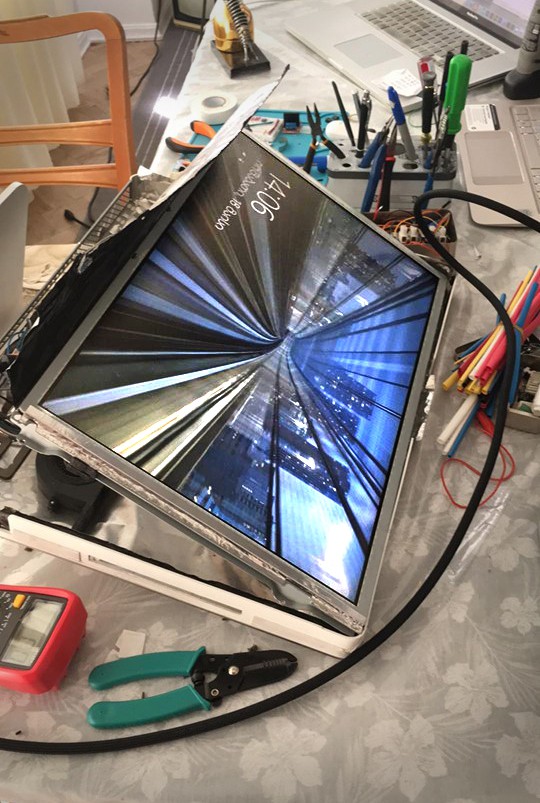
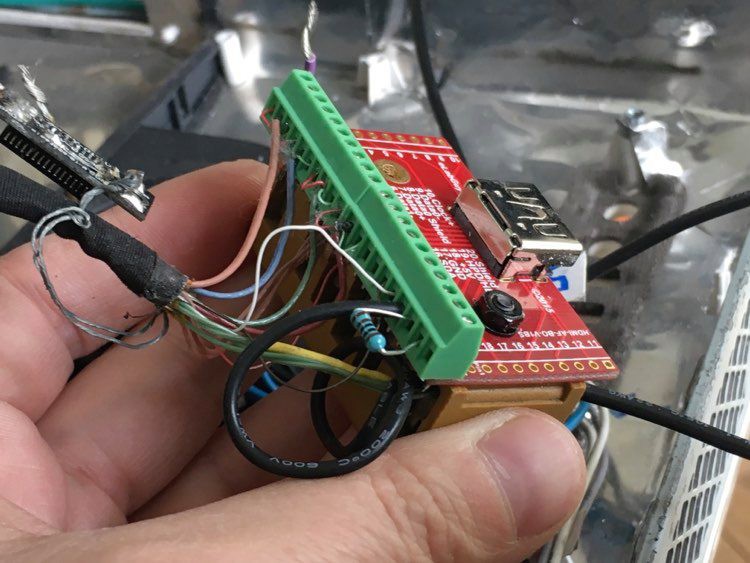
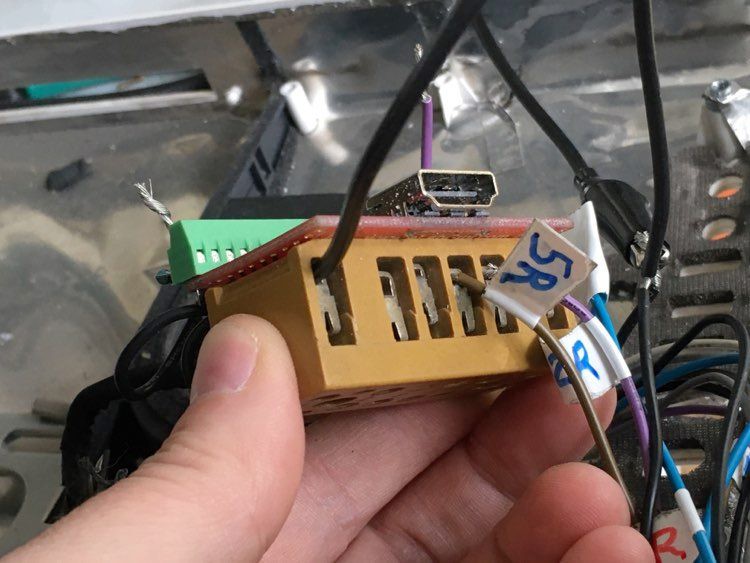
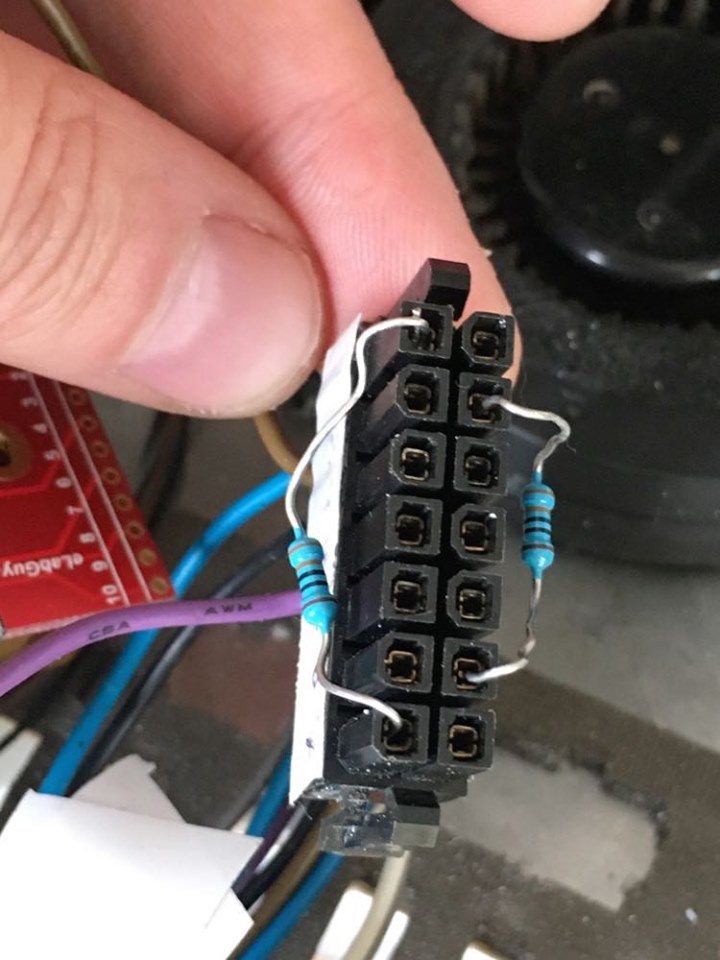
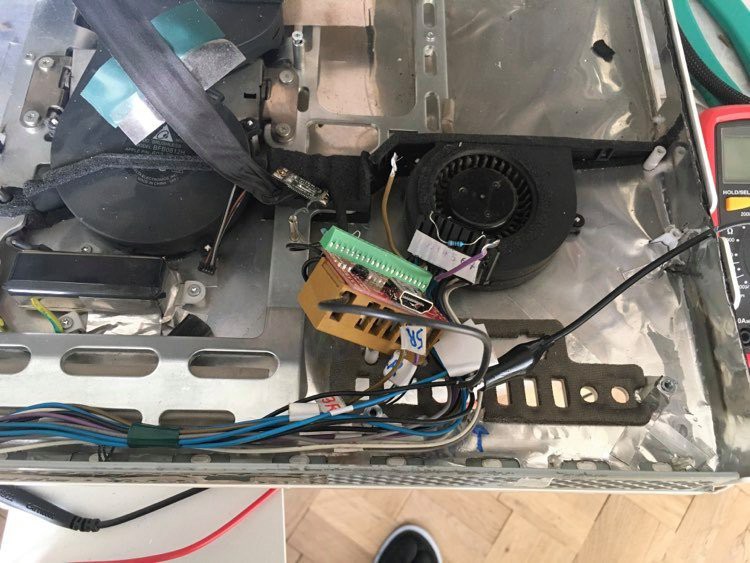
It's alive! There's still a lot to do, however, before wrapping this up:
- Replace female HDMI breakout board with a version where the connector extends further out from the unit. The breakout I have won't mount very well—it will need to extend beyond the board by 4-5 mm if I want to use one of the existing USB ports on the back of the machine. Otherwise I'll need to drill a completely new hole for the connector, and this will inevitably look like garbage.
- Add a 5V relay switch for the jumpered wires, to be activated by a manual switch mounted on the back of the machine. I'm considering a nice vintage switch with a solid mechanical action to give the project a bit of personality.
- Make sure there is no overheating happening. We are, after all, jumpering two wires in a way they aren't meant to be connected, so the possibility for unwanted heat or component failure—or even fire—is real. I'll also wire in one or both cooling fans and test.
- Consider adding a headphone jack and reinstall the speakers. Would need to test them first.
- Reassemble the machine.
I'm sure many makers can relate to that incredible feeling when you've been bogged down in a difficult project and suddenly it comes to life. It's really such an amazing moment!
 Thomas
Thomas
Discussions
Become a Hackaday.io Member
Create an account to leave a comment. Already have an account? Log In.